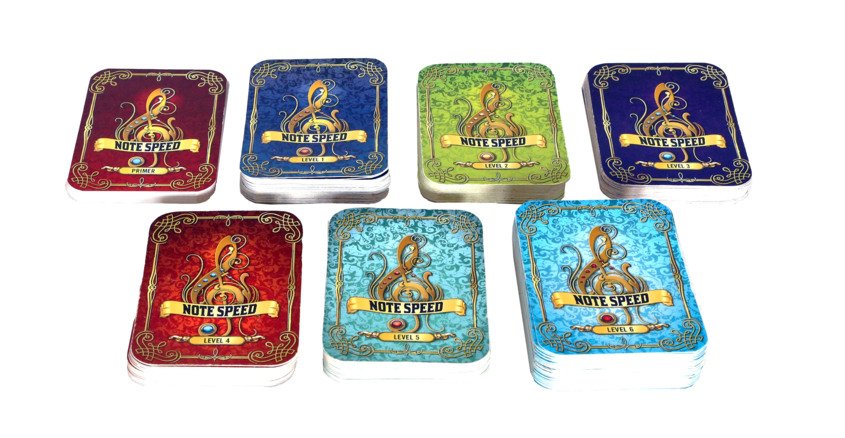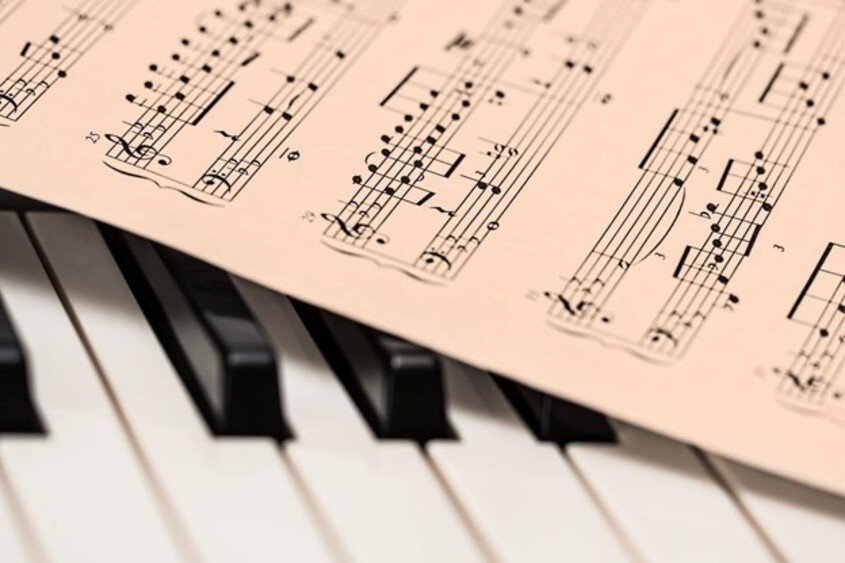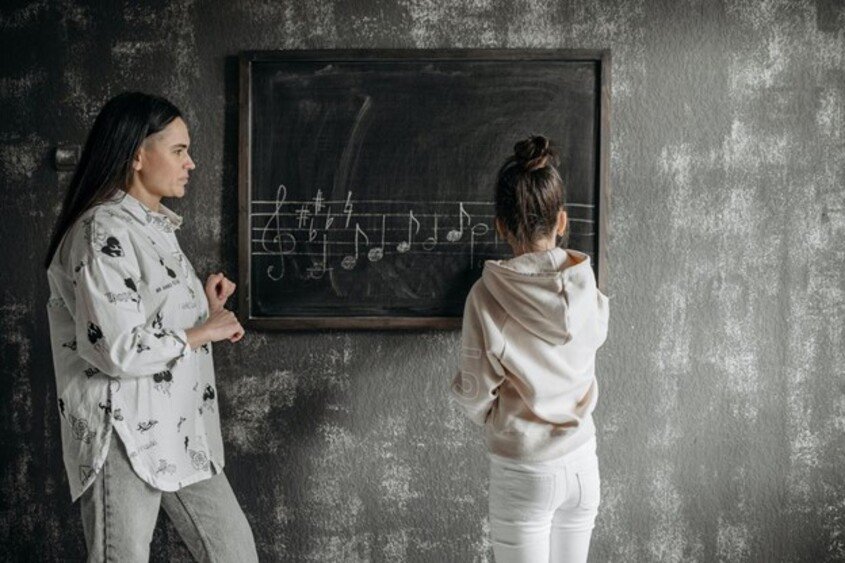5 Ways To Teach Reading Notes in 2021
Learning the piano means learning all the notes, keys to understanding how the music is made. As a result, your students need to improve hand, ear, and eye coordination and understand how to read piano notes from the get-go.
As a piano teacher, you will feel responsible for your students and how they approach learning the piano. Not all students will learn at the same pace, and a teacher must understand this. Young learners take in information at a different pace.
While it might seem strenuous to teach different types of students to read notes and practice them, keeping some methods in mind will help. Here are some of our tried and tested ways to teach reading piano notes in 2021. Without further ado, let’s dive right in!
How To Teach Your Students To Read Notes in 2021
1. Use Notespeed
The Notespeed cards help the piano teachers in their piano lessons and lesson progress. The Notespeed game is one of the most fun and effective ways to educate your students in their learning process.
Notespeed is a game for one or two players. The game is both exciting and competitive. The game teaches notes from Low C to High C in seven sequential levels. All the levels are bundled in the set.
The game is a fun way to learn how to read music notes. It starts from the primary level and works its way around to higher levels. Children will love this game. As most students have problems with their note reading, Notespeed will help teachers bridge their gap with this fun game.
So, how do you play the game?
First off, know that all the cards are labeled with notes from A to G. In each level, both players are given 5 cards. The rest of the cards are divided into two piles, the stuck pile, and the extra pile. Each player is given their own extra pile, and the stuck pile is placed in the middle.
The youngest player starts by pulling out a card from the stuck pile. From there on out, it’s all about speed. Whichever card is shown, the player must play the same note, the note before it or the note after it.
For example, if the dealer pulls C, the players must play B, C, or D. There are no turns. Whoever is able to spot the match quicker will be able to put their card down. The objective is to finish all 5 cards first.
If at any point, you run out of matches, you can pull out a card from your extra pile. You can only have 5 cards at a time, however. You can not take any more cards if you already have 5 cards.
If both players have five cards and no matches, you have to pull from the stuck pile. Once the stuck pile is over, you shuffle the cards you have already played to make a new stuck pile.
We described the instructions for two players, but the game can just as easily be played individually. For playing by yourself, make the stuck pile and the extra pile the same.
The levels get progressively harder; you require a deeper understanding and knowledge of notes as you level up. The primary level only needs you to recognize the alphabet and understand its order. There are no octaves: this is suitable for early learners.
Levels 1-5 deals with understanding octaves. Each level focuses on different octaves. The rules change vastly here as you can not just play A, B, or G when you see A. You have to see what octave the note is on and play your card accordingly.
Level 6 deals with all the octaves at once. For this level, you need to be well-versed with sheet music. Hence, it is nearly impossible for beginners.
The higher levels also differ in the number of cards you are given the extra pile and in the stuck pile. This keeps this interesting even when you learn the notes to a tee.
This variety of levels makes it the perfect game for people of all ages and skill levels. The instructions are easy, and you can play with just about anyone, even yourself.
It is one of the best options you have to teach your students in a fun and engaging way. Let’s face it; flashcards are a thing of the past. They are bland and boring and barely present a challenge. Also, they take hours to learn and are quite confusing at times.
Furthermore, the game helps students learn the natural pattern of reading the notes instead of by 3rds or skips on the staff. By learning the natural pattern, students will gain benefit down the road.
Notespeed is a really fun way for students to learn how to read piano notes and a great method for teachers to use. The games are a great study tool too. If the students have fun while learning musical notes it's effective for the students and easier for the teachers.
Students are often eager to play the game as the competitive nature makes it addictive. Teachers can use this in their music classes to promote a passion for sheet reading.
Eager to get Notespeed? Use ARTICLE10 at checkout to get 10% off using this article's coupon!

2. Ask the students to label piano notes
Labeling the treble and bass clefs is a good way to read piano notes. By labeling the lines and spaces and then using mnemonic devices, students can remember which notes go where.
For the treble clef, you can start labeling the spaces as FACE. Do these steps from starting from bottom to top. The ‘FACE’ acronym fills the spaces in the treble clef from F to E. The acronym here is the mnemonic device.
Next, label ‘E-G-B-D-F’ from the bottom to the top as ‘Every good boy deserves fun’. Next, work on the bass clef. Label the spaces 'A-C-E G-B’ as ‘all cows eat grass’ with a B at the end. Use this as a mnemonic device. Finally, label the lines ‘G-B-D-F-A’ with ‘Good boys deserve fun always’.
One different method of labeling is to label the fingers if the mnemonic system does not work. Find a hand diagram and trace your hand along with it. For example, Middle-C stays in the middle portion of the treble clef. Set it as number one. Then label two to five for the notes above and below. A good tip is to pick easy music with five notes in each direction of the staff.
This method of labeling the music is a good way at first. After the students get the hang of this, it is best to train the eye and ear to read the notes and not the labels.

Source: Photo from Pixabay on Pexels
3. Get the students to learn sight-reading
Sight-reading is the method of reading and performing a piece of music without having prior knowledge, practice, or insight about that piece. This is a challenge for students and even musical tutors. Students can follow these steps to sight-read music:
- Develop the ability to skim ahead and understand and anticipate. In a musical piece, read the first line, and when you begin to play, try and read the second line. Be prepared.
- Practice time signatures. A time signature of 4/4 means there are four beats in every measure, and each beat is equal to a quarter note.
- Start memorizing key signatures. You need to be aware of how many flats or sharps are coming up. This method is helpful for vocalists as well. This method is very beneficial for the long run, even though it takes time.
- Practice the scales in the piece going forward and backward. You can also play along with the rhythm of the piece using a metronome.
- Take notes of the sheet music where you should change keys, slow down, play the piano quietly, and repeat.
- Master musical vocabulary and techniques before you start. You can start to sound the whole piece in your head for better performance.
- Remember to practice using different types of music. Learning sight music means playing whatever is presented to you without having to worry. Practicing different types of music will help remove panic and familiarize yourself with different varieties of music.
4. Encourage students to train their ears and hands
Playing the piano requires good ear, eye, and hand coordination. In music, visual cues and auditory cues work together, and students need to train themselves.
Start by finding a musical piece and get the sheet music. Search videos on how that piece is played, piano performances. Next, start listening to the piece without looking at the sheet music. Do this step with and without looking but keep listening.
Follow along the sheet music track and mark where it's difficult. Practice the difficult portion and keep playing the piece while you hear the music.
Training the ear will take time for students, but auditory learning will help a lot in the long run.
Training the hands often means building muscle memory to focus on your sheet music without worrying about the places you need to move your fingers.
You can play arpeggios, practice a piece repeatedly without looking at the piano, and play scales to train muscle memory into your hands.
Source: Photo by Pavel Danilyuk from Pexels

5. Incorporate Flashcard games
Flashcards can be effective if used properly. Teachers can find an alternative use for the flashcards and create fun exercises for students.
- Tell the students to draw a card from the deck. Ask them to find that note and mark it on the sheet music and circle it. When the students identify the note, it will help them figure out how it looks rather than looking at the flashcard alone. This is known as the ‘find the note’ game.
- Tell the students to make connections with notes. Give them five cards and flip the top card from the deck. The students then will make a connection between the cards in their hand and the top card. Comparing higher or lower notes between cards can be an example.
- Create a sort of hunting game for the students. One note might be the same in a different piece that follows, and students might not figure this out easily. Tell the students to choose a note from the deck and say how many times it will come in a piece. The student will then hunt for the note, counting how many times the note is seen.
- As the students now mark notes, start telling them to identify the notes neighbors, i.e., notes that are steps below or above. This will help students figure out cues in note reading.
- Tell the students to sketch the notes after identifying the flashcard for five seconds. Have a whiteboard ready and let the students sketch the note. This will help the students visualize notes better.
- Tell the students to attach notes on the actual piano key. Give cards to students and let them place the notes.
Some Parting Words
Always remember to ask for the students' input once in a while. Certain students might learn the notes in different ways. Identifying their methods and using them to help the students will help them even further. Follow these ways, and certainly, the students will have fun learning with the help of flashcards.
Teachers have their ways of teaching students how to learn the piano and all the necessary things that come with it. Teaching is more effective when the students are having fun, and you’re connecting with your learners.
Some teachers might find teaching young learners about learning the notes difficult, and the above five ways will certainly help them.
Let us know in the comments section which method is your favorite!
